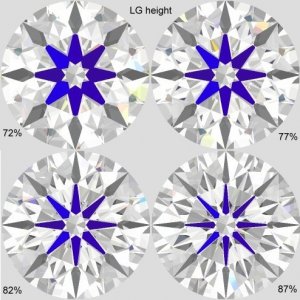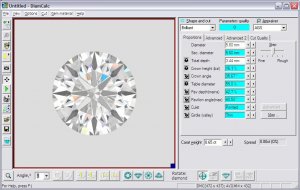Hello all,
I'm pretty sure I know how good this diamond is but just want to confirm such with your opinions/knowledge if at all possible.
I have the diamond in front of me so I've seen it.
I'm interested in the beauty of the stone as perceived by others.
This diamond has 2 reports, one by GIA and one by AnchorCert and both specify the same F VVS1, no culet, thin to medium girlde, table size etc.
Report: GIA/AnchortCert (2 reports)
Shape: RB brilliant
Carat: 0.65ct
Color: F
Clarity: VVS1
Depth: 61.2/61.4% (depending on the report I look at)
Table: 55.0&
Crown %: 16.2
Pavilion %: 42.6
Girdle: Thin to Medium Faceted
Polish: Excellent
Symmetry: Excellent
Culet: None
Fluorescence: None
Measurements: 5.59-5.61x3.44mm or 5.59-5.62x3.43mm (depending on the report I look at)
Thanks for your time and effort.
I'm pretty sure I know how good this diamond is but just want to confirm such with your opinions/knowledge if at all possible.
I have the diamond in front of me so I've seen it.
I'm interested in the beauty of the stone as perceived by others.
This diamond has 2 reports, one by GIA and one by AnchorCert and both specify the same F VVS1, no culet, thin to medium girlde, table size etc.
Report: GIA/AnchortCert (2 reports)
Shape: RB brilliant
Carat: 0.65ct
Color: F
Clarity: VVS1
Depth: 61.2/61.4% (depending on the report I look at)
Table: 55.0&
Crown %: 16.2
Pavilion %: 42.6
Girdle: Thin to Medium Faceted
Polish: Excellent
Symmetry: Excellent
Culet: None
Fluorescence: None
Measurements: 5.59-5.61x3.44mm or 5.59-5.62x3.43mm (depending on the report I look at)
Thanks for your time and effort.









300x240.png)